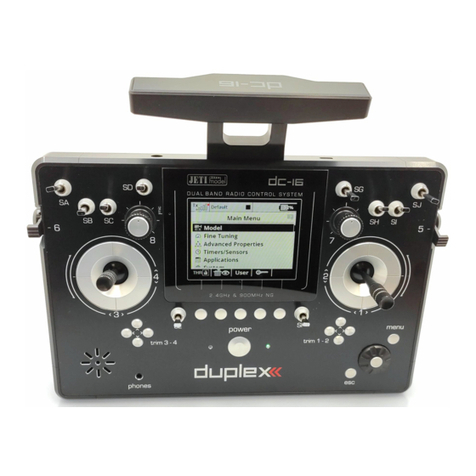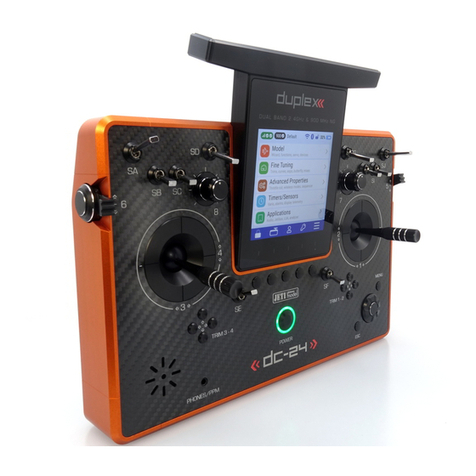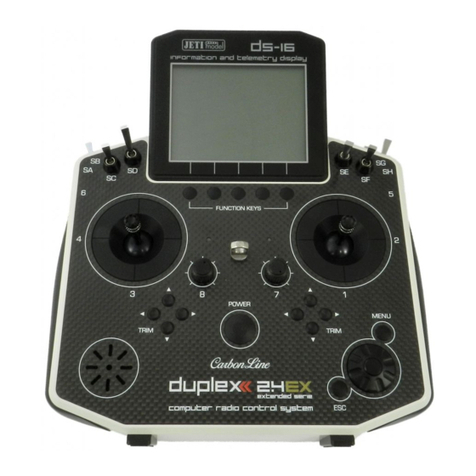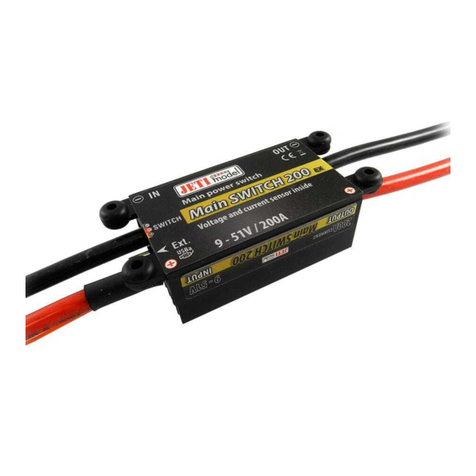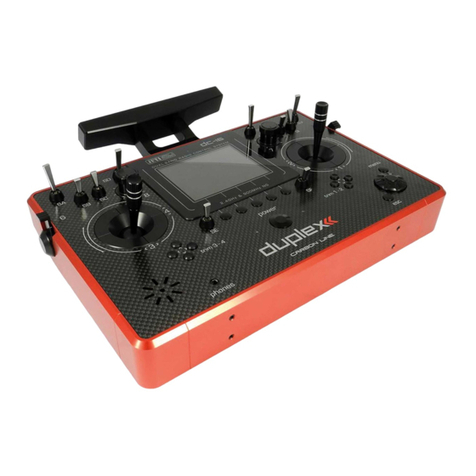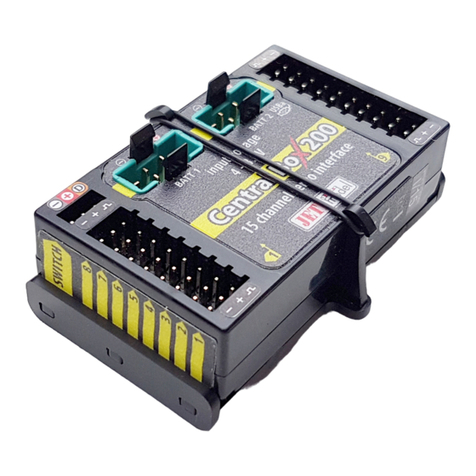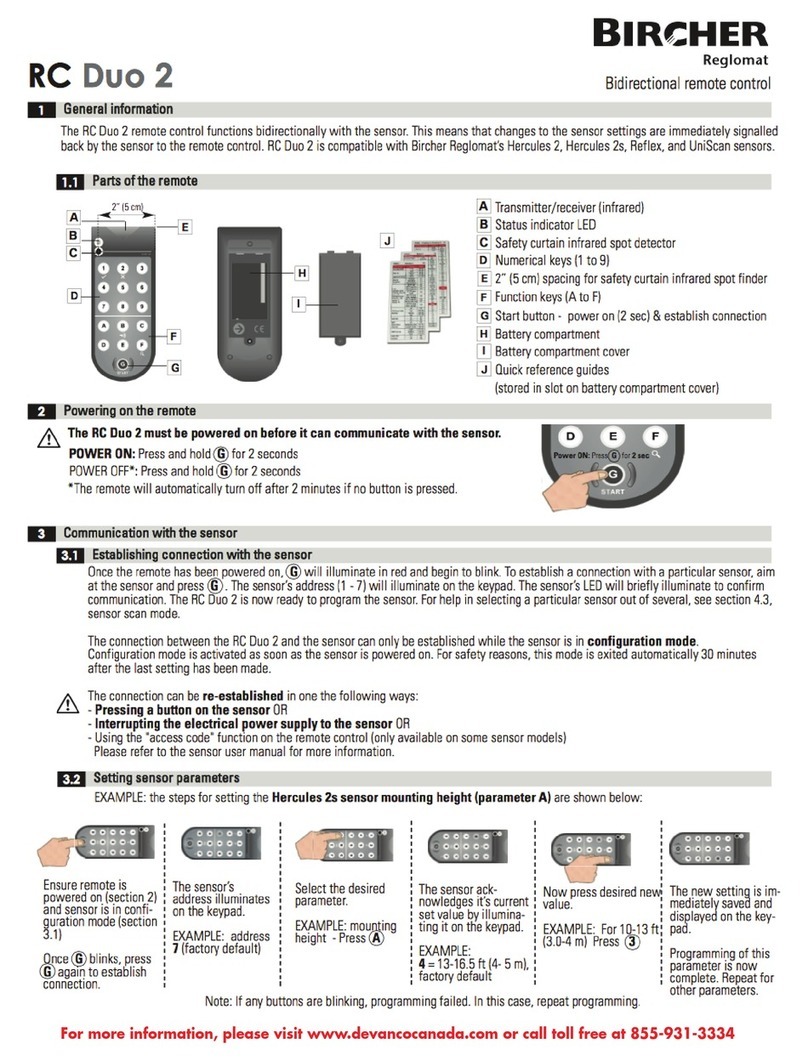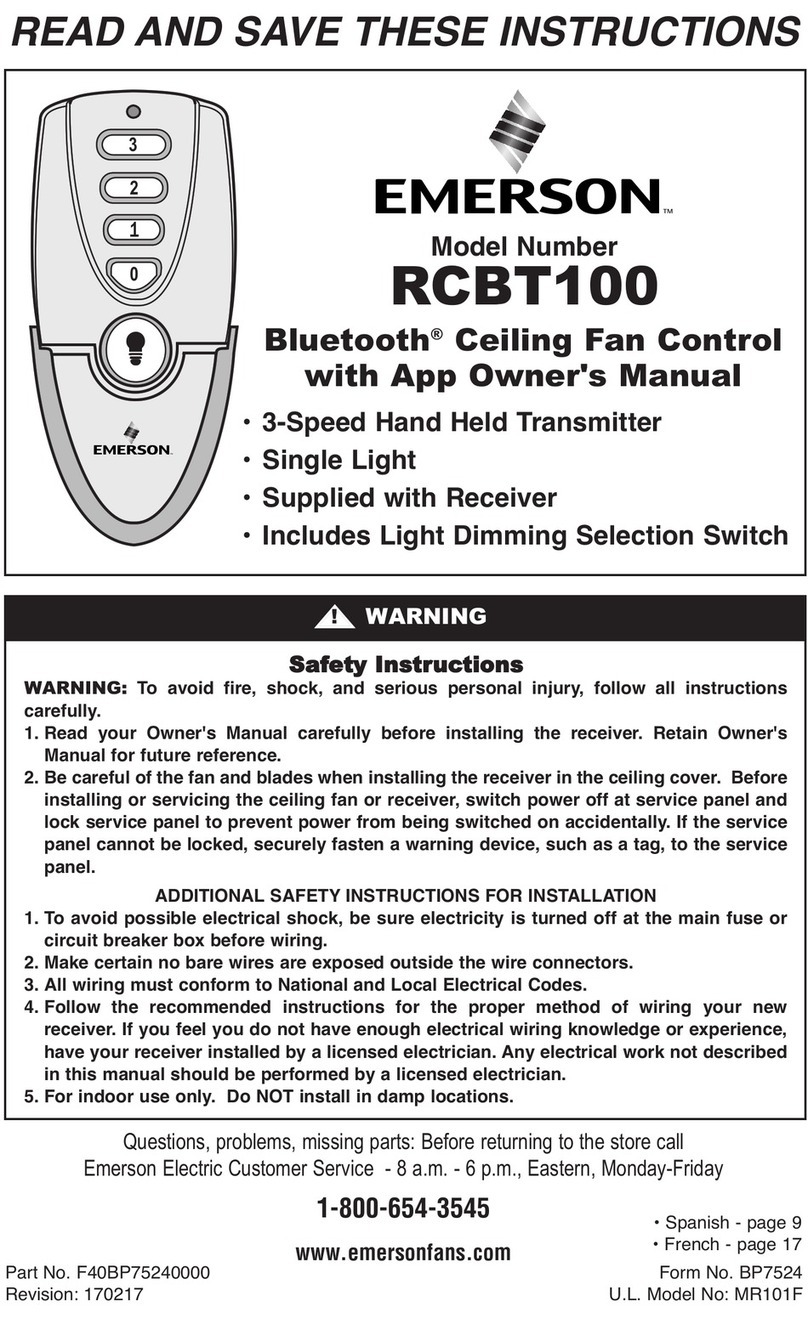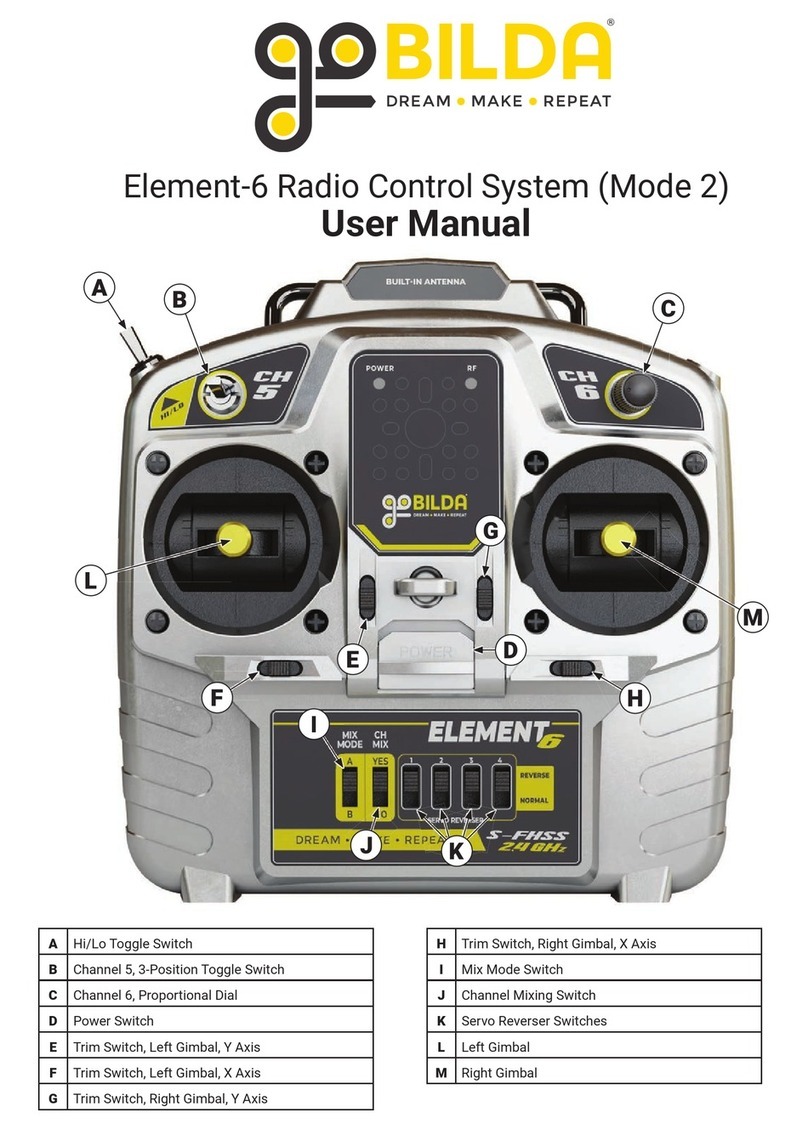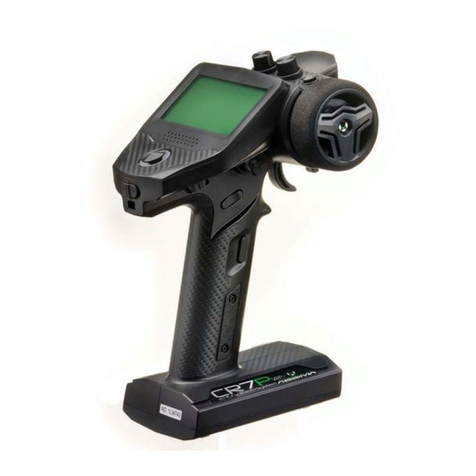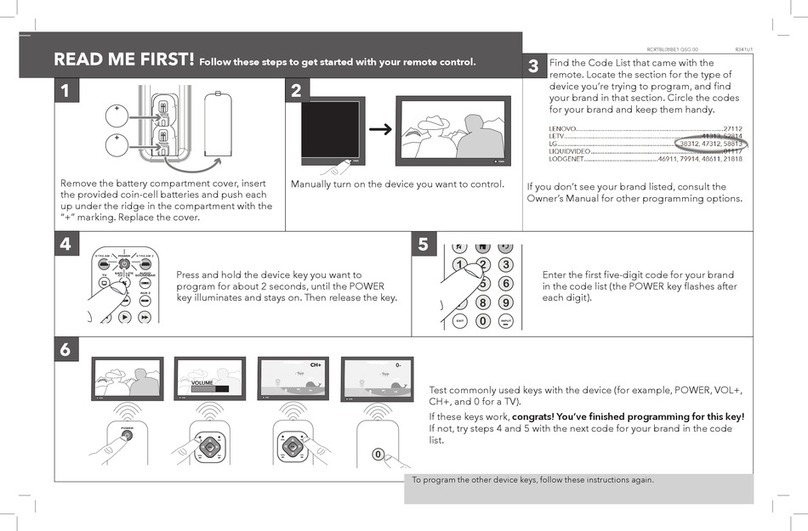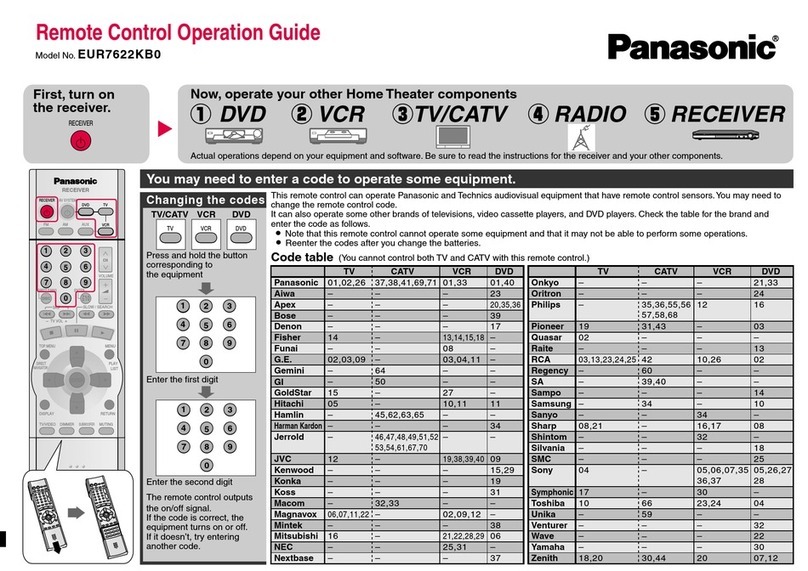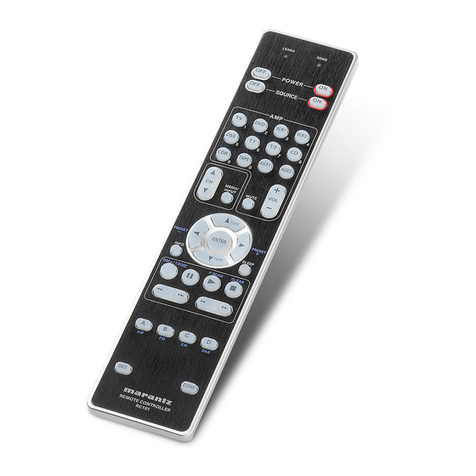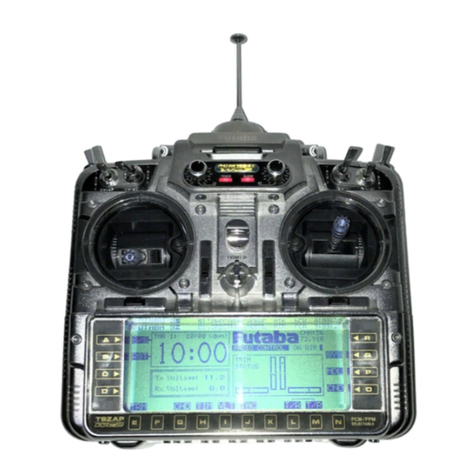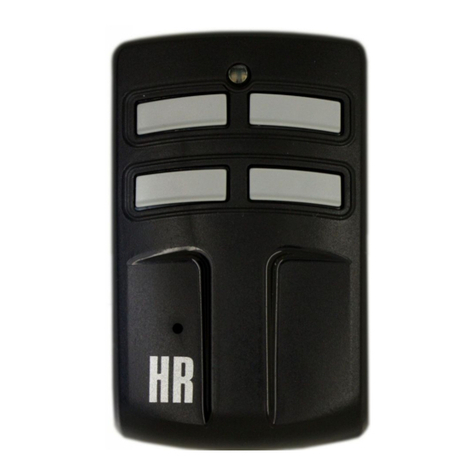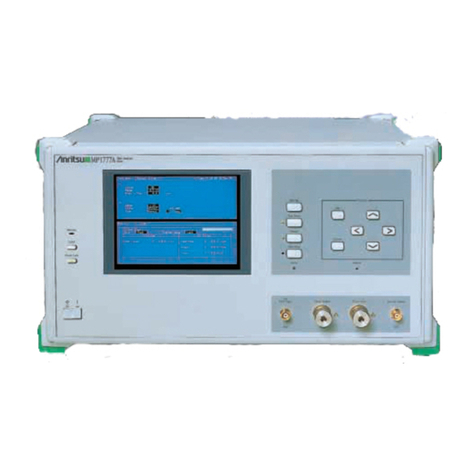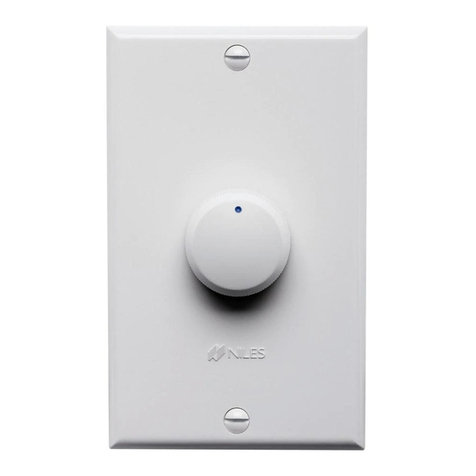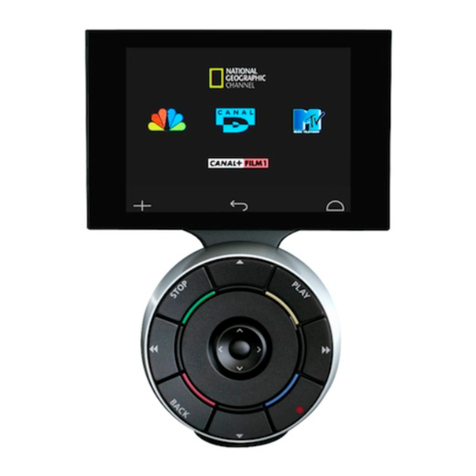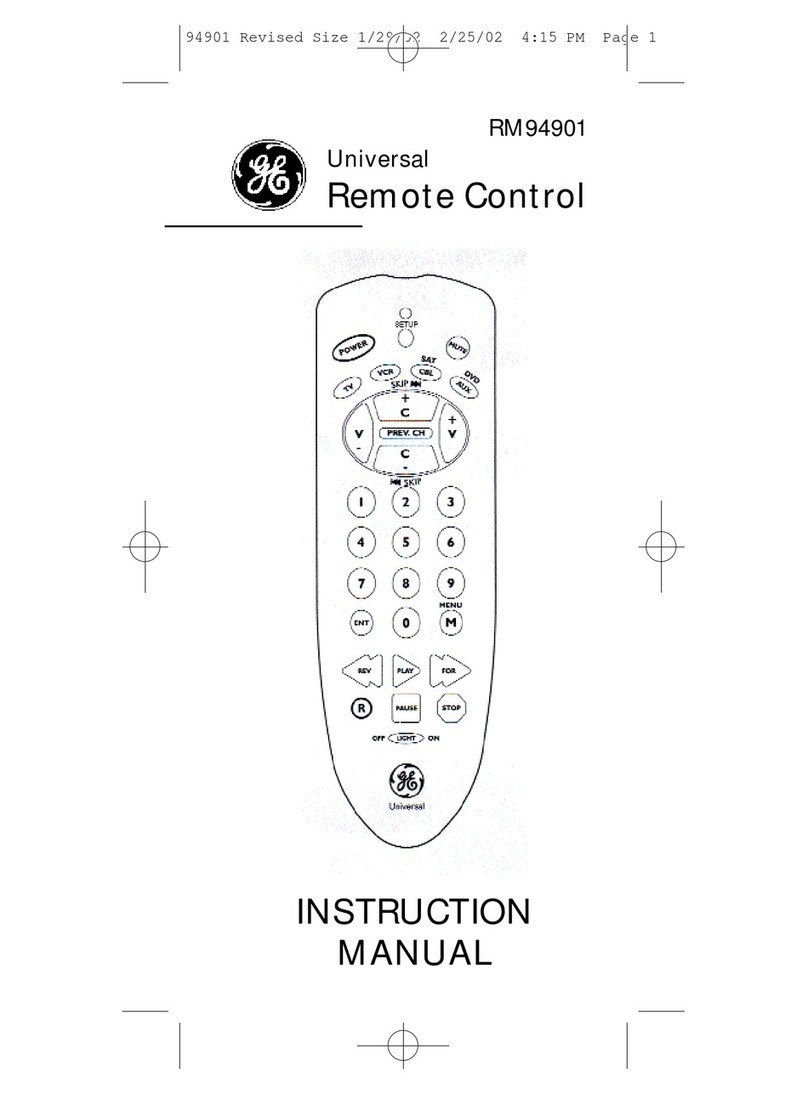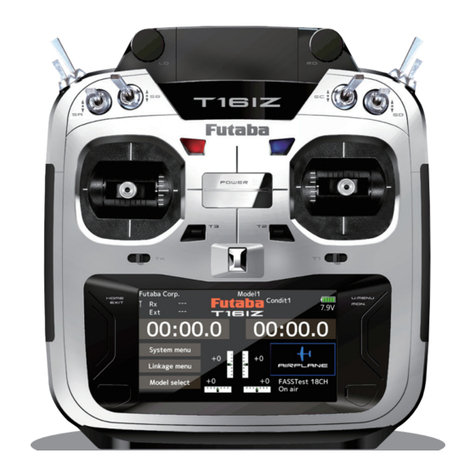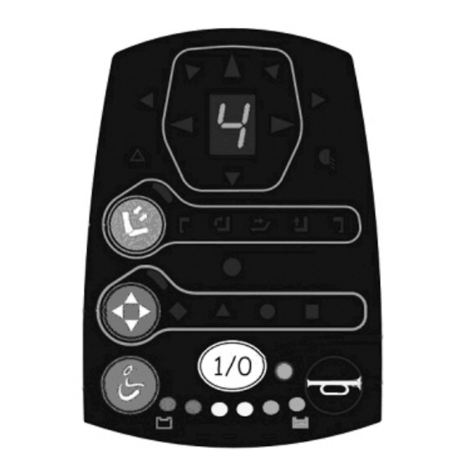
computer radio control system EN
The DS-12 transmitter was developed and produced with the
cooperation of professional engineers and world champion pilots.
The design goals were maximum utility, durability, and reliablity of
their mechanical parts along with simple handling. The
straightforward case shape makes servicing easy. The plastic, ball
bearing equipped, control gimbals with their magnetic Hall sensors
are another revolutionary design concept used to make the DS-12
among the world’s most advanced R/C systems.
Purposefully placed at the top of the transmitter, the 3.5" sunlight
readable color LCD with its wide viewing angle offers nearly perfect
visibility in just about any lighting condition. Thanks to its high
resolution display and use of a relatively large number of graphic
images it was possible to create a simple and intuitive setup
procedure for displaying telemetric data.
The DUPLEX EX family of products have been equipped with an
improved real-time telemetry system which can be viewed on the
LCD transmitter display. The transmitter allows the setup of voice
notifications, both preinstalled and user created, which can be
related to telemetric values, user set alarms, or signals which have
been assigned to conditions of various control elements.
The DS-12 offers concept of individual feature setup based upon the
requirements of each customer. The transmitter is available in a basic
configuration that will meet the needs of most users for most model
types. For individual setting of the transmitter there is a configurator
available at swshop.jetimodel.com. After the simple registration of
your transmitter it is possible to select additional features based
upon your individual demands.
1.1 DS-12
1 Introduction
1. Make sure you have the most
current firmware version in your
transmitter.
2 . R e g i s t e r o n t h e s i t e
swshop.jetimodel.com.
3. After clicking on the „Register
new product“ button you will be
redirected to a form where you
enter a product type (DS-14),
followed by the „serial number”
(SN: xxxxxxxxx) (to be found on
the back of the transmitter behind
the screen) and then enter the „16
digit registration code” (xxxx-
xxxx-xxxx-xxxx) (see the menu
„System -> Installed Modules”
highlighted by the frame). After
registering your transmitter, you
can select individual function
modules that you want to
activate.
4. Mark selected modules and
proceed to checkout.
5. Then you will be asked to pay
1.2 Activation method for software modules of JETI model
9
